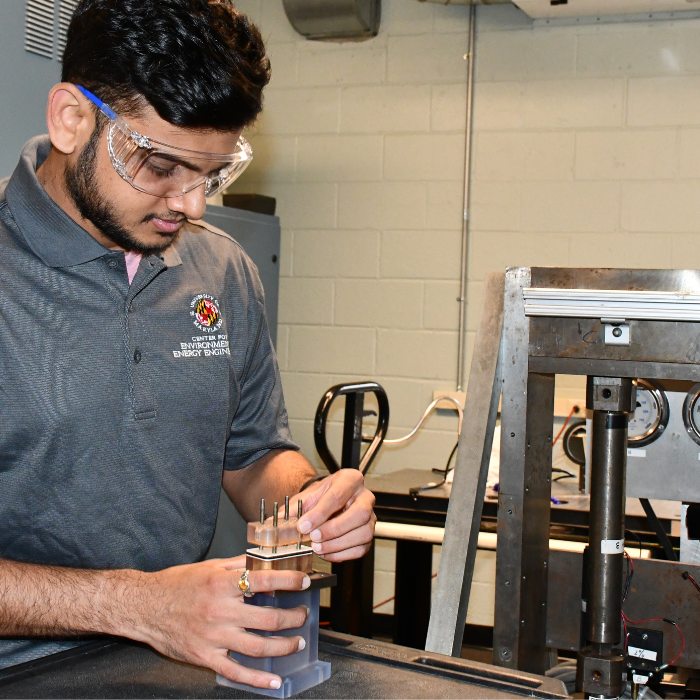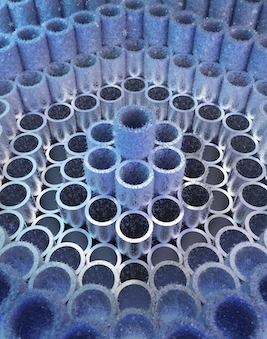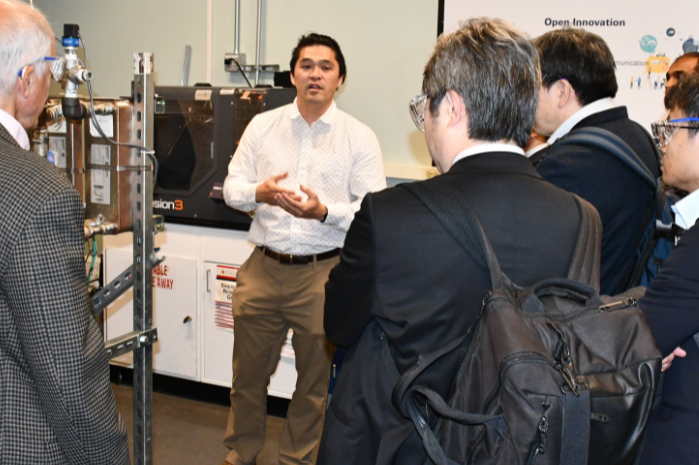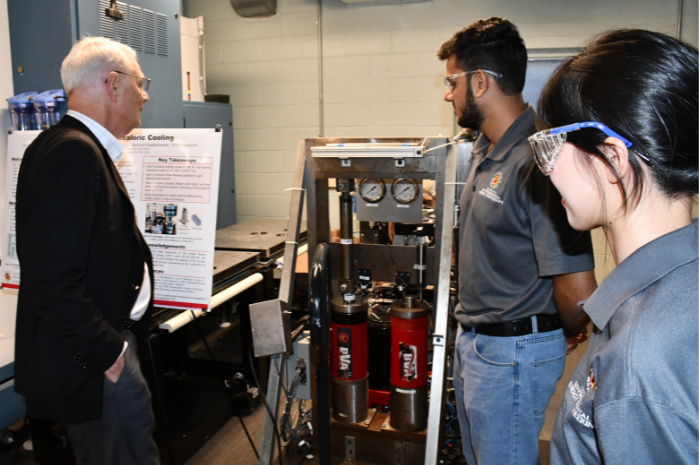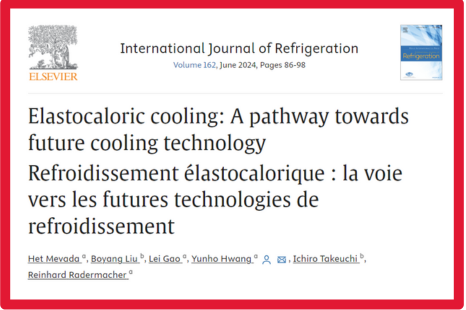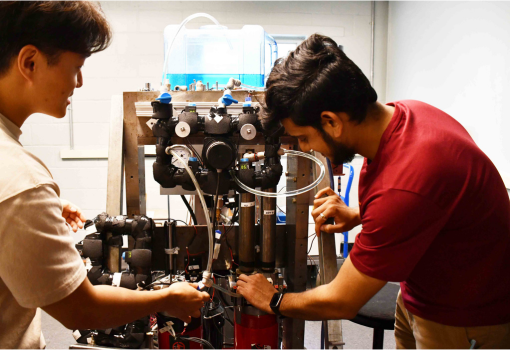News Story
UMD Researchers Develop New Performance Metric to Optimize Elastocaloric Cooling Systems
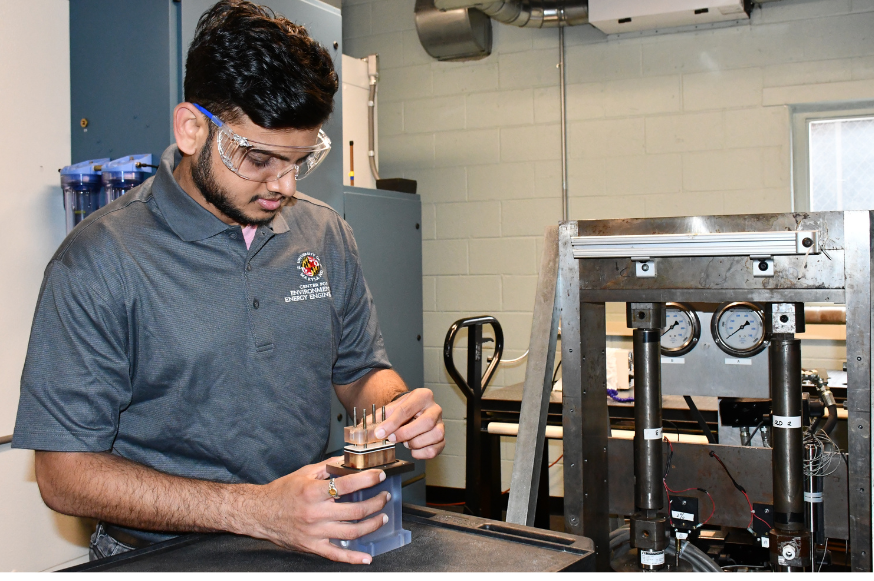
Lead author Het Mevada assembles a cascade elastocaloric cooling prototype in CEEE's Daikin Energy Innovation Laboratory. In the background is an earlier prototype.
The University of Maryland is at the forefront of innovating a breakthrough cooling technology that relies on metals rather than traditional refrigerants, and has now introduced a performance metric to advance the development of these elastocaloric cooling systems.
In the December 2025 issue of the International Journal of Refrigeration, a research team from the UMD Center for Environmental Energy Engineering and the Department of Materials Science and Engineering (MSE) introduces a novel non-dimensional design variable to evaluate and optimize the performance of elastocaloric systems.
Conventional refrigerants, such as hydrofluorocarbons, significantly contribute to climate change when leaked into the atmosphere. In contrast, solid-state cooling techniques – like elastocaloric cooling – have zero direct global warming emissions. Elastocaloric cooling leverages a group of metals called shape memory alloys (SMAs) that can be compressed and then stretched back to their original shape. SMAs release heat when compressed and absorb heat when relaxed, causing the temperature around them to drop.
In its new publication, the UMD team presents a thermal utilization ratio (Z*) that takes into account multiple factors – including the properties of the shape memory alloy, characteristics of the working fluid, heat transfer geometries and system configurations – to optimize the overall system performance.
“This gives the elastocaloric community as a whole a new parameter that we can use to optimize our systems, helping us develop more efficient solutions,” says lead author Het Mevada, a fourth-year Ph.D. student in mechanical engineering. Co-authors are Research Professor Yunho Hwang, director of CEEE’s Energy Efficiency and Heat Pump Consortium, and MSE Chair and Professor Ichiro Takeuchi.
This new metric could accelerate research in elastocaloric cooling by facilitating system optimization. As part of their study, the researchers conducted optimization simulations across a range of system configurations, SMA materials and geometries. While the UMD team’s experimental research has focused primarily on using nickel-titanium as the SMA, the study indicated that the less expensive copper-aluminum-zinc alloy offers a similar coefficient of performance and may be a viable alternative.
Download the paper: “Optimization of heat transfer mechanisms in elastocaloric cooling systems.”
Published October 21, 2025
